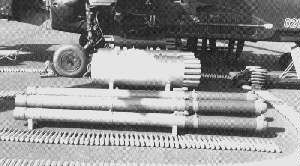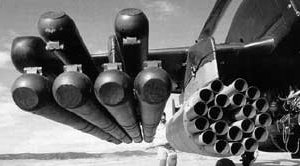AT-15 Khrizantema & AT-16 Vikhr
군사대국 | 2004-07-09 19:43:35
조회 2426 | 추천 1 | 다운로드 10
1.AT-15 Khrizantema
The development of the Khrizantema missile system provides the Russian Army with a weapon system
that will significantly upgrade its antitank capability. Even with the improved capabilities
the AT-14 Kornet has over earlier systems, an ATGM with all-weather, day or night, immunity to countermeasures, and fire and forget capabilities was still highly desired. In July 1996,
Russia's KBM Engineering Design Bureau revealed a dual-guidance missile system with the desired capabilities.
A new long-range ATGM, the Khrizantema (9M123), capable of firing six-kilometer-range supersonic
missiles, incorporating both radar and laser command guidance receivers, is in its last stage of
testing. KBM expects production to begin in 1998.
The key role of the Khrizantema (Russian for "chrysanthemum") is to destroy armored vehicles at
long range. In addition, it could be used to destroy bunkers, and to engage slow- or low-flying helicopters.
The Khrizantema missile system is mounted on a modified BMP-3 infantry combat vehicle chassis.
The chassis is designated the 9M157-2, and has the amphibious capability of the BMP-3.
Two models of the 9M123 missile have been developed. One has a tandem high-explosive antitank (HEAT) warhead; designated the 9M123-2, it apparently can penetrate over 1000 millimeters of steel armor
protected by explosive reactive armor (ERA). The second model, the 9M123-F-2, has a high explosive
warhead. The maximum range of the missile is 6000 meters with a maximum speed of 400 meters per second; thus it is supersonic. The missile has two movable control surfaces at its rear, with four wrap-around wings
about three-quarters of the way down its body toward the rear.
For the first time in the world, an automatic radar target detection and tracking system, with
simultaneous missile control during its guidance to the target, was developed for the Khrizantema ATGM.
The unique feature of the missile is that it has two modes of guidance: automatic, where it is
guided by a roof-mounted radar; and by a semi-automatic laser beam rider, using the sight mounted in the front of the hull on the right side. There is no known comparable missile in the West under development
or in service with a similar guidance system.
The Russian Army is now faced with the option of purchasing the less expensive BMP-3 mounted Kornet
system, which is a follow-on to the AT-5, or the more expensive Khrizantema, a more powerful system
capable of engaging more targets at greater ranges, possibly employing the Kornet at regimental level and the Khrizantema at division level. Regardless of its placement in the Russian Army, many nations may find it desirable and allocate a portion of their budgets to purchase the extremely capable Khrizantema
missile system.
2.AT-16 Vikhr
① Specifications
Contractor: NPO Mashinostroyenie
Entered Service:
Total length:
Diameter:
Wingspan:
Weight:
Warhead Weight: HEAT
Propulsion:
Maximum Speed:
Maximum effective range: 10,000 m
Effective against ground & air targets at converging speeds to 800 km/h.
Penetration: 900 mm
Guidance mode: Laser Beam Rider SACLOS
Single-shot hit probability: 0.95 probability claimed
AT-15 Khrizantema 역시 사진이 없는 관계로 원문을 발췌해서 올립니다
The development of the Khrizantema missile system provides the Russian Army with a weapon system
that will significantly upgrade its antitank capability. Even with the improved capabilities
the AT-14 Kornet has over earlier systems, an ATGM with all-weather, day or night, immunity to countermeasures, and fire and forget capabilities was still highly desired. In July 1996,
Russia's KBM Engineering Design Bureau revealed a dual-guidance missile system with the desired capabilities.
A new long-range ATGM, the Khrizantema (9M123), capable of firing six-kilometer-range supersonic
missiles, incorporating both radar and laser command guidance receivers, is in its last stage of
testing. KBM expects production to begin in 1998.
The key role of the Khrizantema (Russian for "chrysanthemum") is to destroy armored vehicles at
long range. In addition, it could be used to destroy bunkers, and to engage slow- or low-flying helicopters.
The Khrizantema missile system is mounted on a modified BMP-3 infantry combat vehicle chassis.
The chassis is designated the 9M157-2, and has the amphibious capability of the BMP-3.
Two models of the 9M123 missile have been developed. One has a tandem high-explosive antitank (HEAT) warhead; designated the 9M123-2, it apparently can penetrate over 1000 millimeters of steel armor
protected by explosive reactive armor (ERA). The second model, the 9M123-F-2, has a high explosive
warhead. The maximum range of the missile is 6000 meters with a maximum speed of 400 meters per second; thus it is supersonic. The missile has two movable control surfaces at its rear, with four wrap-around wings
about three-quarters of the way down its body toward the rear.
For the first time in the world, an automatic radar target detection and tracking system, with
simultaneous missile control during its guidance to the target, was developed for the Khrizantema ATGM.
The unique feature of the missile is that it has two modes of guidance: automatic, where it is
guided by a roof-mounted radar; and by a semi-automatic laser beam rider, using the sight mounted in the front of the hull on the right side. There is no known comparable missile in the West under development
or in service with a similar guidance system.
The Russian Army is now faced with the option of purchasing the less expensive BMP-3 mounted Kornet
system, which is a follow-on to the AT-5, or the more expensive Khrizantema, a more powerful system
capable of engaging more targets at greater ranges, possibly employing the Kornet at regimental level and the Khrizantema at division level. Regardless of its placement in the Russian Army, many nations may find it desirable and allocate a portion of their budgets to purchase the extremely capable Khrizantema
missile system.
2.AT-16 Vikhr
① Specifications
Contractor: NPO Mashinostroyenie
Entered Service:
Total length:
Diameter:
Wingspan:
Weight:
Warhead Weight: HEAT
Propulsion:
Maximum Speed:
Maximum effective range: 10,000 m
Effective against ground & air targets at converging speeds to 800 km/h.
Penetration: 900 mm
Guidance mode: Laser Beam Rider SACLOS
Single-shot hit probability: 0.95 probability claimed
AT-15 Khrizantema 역시 사진이 없는 관계로 원문을 발췌해서 올립니다








댓글 [0]